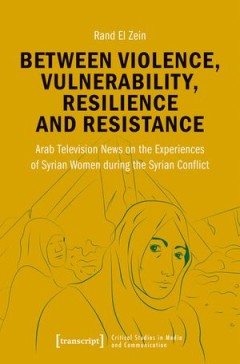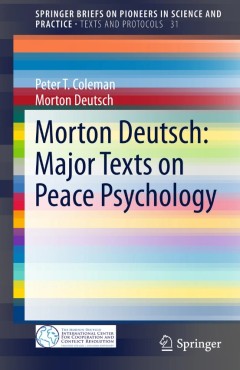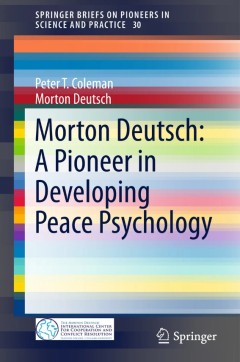Filter by

Between Violence, Vulnerability, Resilience and Resistance: Arab Television N…
How are the structures of power and the notion of agency among Syrian women during the recent Syrian conflict connected? To explore this matter, Rand El Zein investigates gender politics around displacement, conflict, the body, and the nation. In doing so, she outstandingly reconciles critical media theory as myriad and productive with the theoretical concepts on subjectivity, power, performati…
- Edition
- -
- ISBN/ISSN
- 9783839459591
- Collation
- -
- Series Title
- -
- Call Number
- 300 ZEI b

https://openresearchlibrary.org/content/d6ddf831-9ca9-46b0-9c43-1820c069ba9
In recent political and constitutional history, scholars seldom specify how and why they use the concept of territory. In research on state formation processes and nation building, for instance, the term mostly designates an enclosed geographical area ruled by a central government. Inspired by ideas from political geographers, this book explores the layered and constantly changing meanings of t…
- Edition
- -
- ISBN/ISSN
- -
- Collation
- -
- Series Title
- -
- Call Number
- -

Empirical Philosophy of Science Introducing Qualitative Methods into Philoso…
The book examines the emerging approach of using qualitative methods, such as interviews and field observations, in the philosophy of science. Qualitative methods are gaining popularity among philosophers of science as more and more scholars are resorting to empirical work in their study of scientific practices. At the same time, the results produced through empirical work are quite different f…
- Edition
- -
- ISBN/ISSN
- 978-3-319-18600-9
- Collation
- VI, 171
- Series Title
- -
- Call Number
- -

The University According to Humboldt History, Policy, and Future Possibilities
This book discusses the philosophy and educational reforms initiated by Wilhelm von Humboldt as well as their legacy in the modern university system. It begins with a discussion of the history of the university from antiquity and the Middle Ages through the era of Humboldt’s reforms and its remnants in and implications for the present day. The authors then delve into policy, outlining the key…
- Edition
- -
- ISBN/ISSN
- 978-3-319-13856-5
- Collation
- -
- Series Title
- -
- Call Number
- -

Human Rights in Brief
In all civilized nations, attempts are made to define and buttress human rights. The core of the concept is the same everywhere: Human rights are the rights that one has simply because one is human. They are universal and equal. The following pubilcation gives an overview of human rights across the globe.
- Edition
- -
- ISBN/ISSN
- -
- Collation
- -
- Series Title
- -
- Call Number
- 900 DEP h

Morton Deutsch: Major Texts on Peace Psychology
Commemorating Morton Deutsch’s 95th birthday, this book presents ten major texts by this highly respected social psychologist on war and peace. This second volume presents Deutsch in his role as a leading social science activist on issues of war and peace – writing papers, making speeches and participating in demonstrations. After serving in the U.S. Air Force during World War II and being …
- Edition
- 1
- ISBN/ISSN
- 978-3-319-15442-8
- Collation
- XIII, 167
- Series Title
- SpringerBriefs on Pioneers in Science and Practice
- Call Number
- -

Morton Deutsch: A Pioneer in Developing Peace Psychology
Commemorating Morton Deutsch’s 95th birthday, this book presents ten major texts by this highly respected social psychologist on war and peace. This first volume presents Deutsch in his role as a leading social science activist on issues of war and peace – writing papers, making speeches and participating in demonstrations. After serving in the U.S. Air Force during World War II and being a…
- Edition
- 1
- ISBN/ISSN
- 978-3-319-15439-8
- Collation
- XVI, 139
- Series Title
- SpringerBriefs on Pioneers in Science and Practice
- Call Number
- -

The Theory of New Classical Macroeconomics A Positive Critique
This book examines new classical macroeconomics from a comparative and critical point of view that confronts the original texts and later comments as a first dimension of comparison. The second dimension appears in a historical context, since none of the new classical doctrines can be analyzed ignoring the parallelism and discrepancies with the theory of Keynes, Friedman or Phelps. Radicalism o…
- Edition
- -
- ISBN/ISSN
- 978-3-319-17578-2
- Collation
- -
- Series Title
- -
- Call Number
- -

The Synthetic Nitrogen Industry in World War I Its Emergence and Expansion
This concise brief describes how the demands of World War I, often referred to as the Chemists’ War, led to the rapid emergence of a new key industry based on fixation of atmospheric nitrogen. Then, as now, nitrogen products, including nitric acid, and nitrates, were essential for both fertilizers and in the manufacture of modern explosives. During the first decade of the twentieth century, t…
- Edition
- -
- ISBN/ISSN
- 978-3-319-19357-1
- Collation
- -
- Series Title
- -
- Call Number
- -

The Surgions Mate The First Compendium on Naval Medicine, Surgery and Drug T…
This book reproduces and comments John Woodall’s handbook which was used as standard text for medical treatment at sea in the seventeenth century and was the first instruction for medical service aboard on the whole. In 1612 the East India Company, founded in London 1600 and invested with special royal privileges and authority, appointed John Woodall as its first surgeon-general, who had g…
- Edition
- -
- ISBN/ISSN
- 978-3-319-25574-3
- Collation
- -
- Series Title
- -
- Call Number
- -
 Computer Science, Information & General Works
Computer Science, Information & General Works  Philosophy & Psychology
Philosophy & Psychology  Religion
Religion  Social Sciences
Social Sciences  Language
Language  Pure Science
Pure Science  Applied Sciences
Applied Sciences  Art & Recreation
Art & Recreation  Literature
Literature  History & Geography
History & Geography